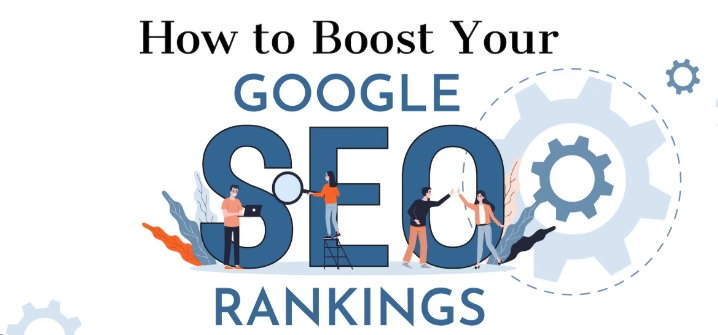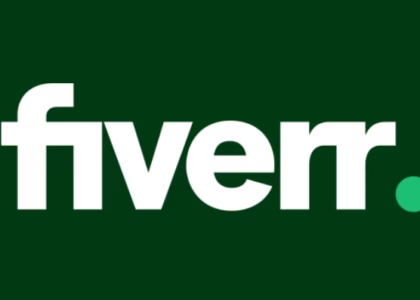Google on Ranking In the digital age, Google reigns supreme as the world’s most popular search engine, handling over 8.5 billion searches per day. The phrase “Google ranking” refers to the position a webpage appears in the organic (non-paid) search results. But how does Google rank content? What factors truly influence your site’s visibility? And how can SEO specialists, bloggers, and businesses climb the ladder to the coveted #1 spot?
This comprehensive guide will demystify how Google’s search algorithm ranks pages, what you need to do to optimize for top rankings, and what has changed in 2025.
Table of Contents
- Introduction to Google Ranking
- Google’s Search Algorithm: A Brief History
- Core Ranking Factors (2025)
- The Role of AI and Machine Learning
- On-Page SEO Techniques That Still Matter
- Off-Page SEO & Backlinks in 2025
- Mobile-First Indexing and Core Web Vitals
- E-E-A-T: Experience, Expertise, Authoritativeness, Trustworthiness
- Helpful Content System & User Intent
- Common SEO Myths Debunked
- SEO in the Age of SGE (Search Generative Experience)
- Google Penalties and How to Avoid Them
- Tools for Monitoring and Improving Rankings
- Future Trends in Google Search Ranking
- Final Thoughts
1. Introduction to Google Ranking
Google ranking is the order in which websites appear in Google’s organic search results. The higher your rank, the more visible your website becomes, translating into increased traffic, brand awareness, and revenue.
The primary goal of Google is to provide the most relevant and high-quality information in response to a user’s search query. Understanding how ranking works is crucial for any business or content creator aiming to grow their digital presence.
2. Google’s Search Algorithm: A Brief History
Google’s algorithm has evolved significantly since its inception in 1998. Key milestones include:
- PageRank (1998): The original algorithm that ranked pages based on backlink quantity and quality.
- Panda (2011): Targeted low-quality, thin content.
- Penguin (2012): Penalized spammy backlinks and keyword stuffing.
- Hummingbird (2013): Enhanced understanding of conversational search and user intent.
- BERT (2019): Used natural language processing to better understand search context.
- Helpful Content Update (2022): Prioritized content created for people, not search engines.
- SGE (2023-2024): Introduced AI-generated answers into search results.
These updates show a clear shift: from technical tricks to user-focused, high-quality content.
3. Core Ranking Factors (2025)
Google has confirmed some factors, while others are known through industry studies and observations. As of 2025, the most influential ranking factors include:
a. High-Quality Content
Google rewards content that is original, comprehensive, and helpful.
b. Backlinks
Authoritative and relevant backlinks still hold significant value.
c. User Experience (UX)
Includes site speed, mobile-friendliness, and ease of navigation.
d. Keyword Optimization
Using relevant keywords naturally in titles, headers, and body text.
e. Search Intent Match
Understanding and satisfying what the user actually wants.
f. Freshness
Timely and regularly updated content is favored in certain queries.
4. The Role of AI and Machine Learning
Google leverages AI models like BERT and MUM (Multitask Unified Model) to:
- Understand natural language better
- Analyze multimedia content (videos, images)
- Identify context and nuance in queries
- Improve voice search results
MUM, introduced in 2021 and expanded in 2024, helps Google analyze content across languages and formats. This makes multilingual and multi-format content more discoverable.
5. On-Page SEO Techniques That Still Matter
On-page SEO refers to optimizing individual pages for search rankings.
Key elements include:
- Title Tags: Compelling and keyword-rich
- Meta Descriptions: Informative summaries
- Header Tags (H1, H2, H3): Logical structure
- Internal Linking: Spreads authority and improves navigation
- Image Optimization: Alt text and compression
- Schema Markup: Enhances snippets (e.g., FAQs, reviews)
Tip: Use tools like Surfer SEO or Frase.io to optimize content semantically.
6. Off-Page SEO & Backlinks in 2025
Backlinks remain a strong indicator of trust. However, quality far outweighs quantity.
Good Backlink Sources:
- Editorial mentions from authority sites
- Guest posts on niche-relevant blogs
- Digital PR campaigns
- HARO (Help a Reporter Out)
- Podcasts and interviews
Avoid:
- Link farms
- PBNs (Private Blog Networks)
- Paid links (unless properly tagged with rel=”sponsored”)
In 2025, Google’s Link Spam Update 3.0 made link manipulation easier to detect using machine learning.
7. Mobile-First Indexing and Core Web Vitals
Google predominantly uses the mobile version of content for indexing and ranking.
Core Web Vitals are UX-focused metrics that matter more than ever:
- Largest Contentful Paint (LCP): Speed of loading key content
- First Input Delay (FID): Speed of interactivity
- Cumulative Layout Shift (CLS): Visual stability
In 2025, Google added INP (Interaction to Next Paint) to replace FID as a ranking signal.
8. E-E-A-T: Experience, Expertise, Authoritativeness, Trustworthiness
Google assesses the credibility of content creators and their websites, especially in YMYL (Your Money, Your Life) niches like health and finance.
Ways to Improve E-E-A-T:
- Display real author names and bios
- Link to credentials (e.g., licenses, education)
- Get mentioned or linked by authoritative sites
- Show firsthand experience with the subject matter
- Use trust signals: HTTPS, clear privacy policies, customer reviews
9. Helpful Content System & User Intent
Google’s Helpful Content System rewards pages written to help users rather than manipulate rankings.
To optimize:
- Answer common questions in your niche
- Avoid fluff and word count inflation
- Stay on-topic: avoid creating irrelevant pages just for traffic
- Use clear formatting, bullet points, and visuals
Search intent falls into four types:
- Informational – Learn something
- Navigational – Find a specific site/page
- Transactional – Make a purchase
- Commercial Investigation – Compare products/services
Create content that matches the intent behind the keyword.
10. Common SEO Myths Debunked
| Myth | Reality |
|---|---|
| Meta keywords help rankings | They are ignored by Google |
| Keyword density must be 2% | No ideal percentage exists |
| More pages = better SEO | Quality > Quantity |
| Google Ads boost SEO | Paid and organic are separate |
| Exact match domains rank better | Only if content is good |
11. SEO in the Age of SGE (Search Generative Experience)
SGE brings AI-generated answers to the top of SERPs. This changes how users interact with results.
Implications:
- Fewer clicks to organic links
- More competition from Google’s own AI answers
- Importance of being cited in the AI response (Topical authority!)
Tips:
- Use structured data
- Write succinct, factual, and well-cited answers
- Create original data, insights, and expert opinions
12. Google Penalties and How to Avoid Them
Google issues penalties (manual or algorithmic) for violating guidelines.
Common offenses:
- Cloaking
- Keyword stuffing
- Hidden text/links
- Spammy backlinks
- Thin content
How to avoid:
- Follow Google’s Search Essentials
- Conduct regular SEO audits
- Disavow bad links when necessary
- Focus on value over tricks
13. Tools for Monitoring and Improving Rankings
Some top tools to keep your SEO strategy sharp:
| Tool | Purpose |
|---|---|
| Google Search Console | Track rankings, issues, indexing |
| Ahrefs / SEMrush | Backlink analysis, keyword tracking |
| Screaming Frog | Technical audits |
| Surfer SEO | On-page optimization |
| Rank Math / Yoast | SEO plugins for WordPress |
| PageSpeed Insights | Site speed and UX improvement |
14. Future Trends in Google Search Ranking
The SEO landscape in 2025 is shifting toward:
- AI-powered content evaluation
- Visual Search and Google Lens growth
- Voice Search optimization
- Video SEO importance (YouTube + Shorts)
- Personalized search results (based on user behavior)
- Zero-click searches becoming dominant
As user behavior evolves, so must your SEO strategies.
15. Final Thoughts
Achieving top Google rankings isn’t about tricking the algorithm — it’s about aligning with its ultimate goal: serving the user the most relevant, trustworthy, and high-quality content.
Here’s your 2025 SEO checklist:
✅ Prioritize helpful, original content
✅ Optimize for mobile and page experience
✅ Build real authority with E-E-A-T
✅ Earn links, don’t manipulate
✅ Stay updated with algorithm changes
✅ Use tools and data to refine your strategy
Ranking on Google is both a science and an art. While no one outside Google knows every ranking factor, by focusing on user intent, credibility, and performance, you’re already ahead of the game.






